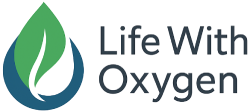Introduction
Skin diseases can range from mild irritations to serious conditions that affect the skin’s integrity and function. The skin is the body’s largest organ and acts as a barrier against harmful pathogens, UV radiation, and environmental toxins. When skin diseases occur, this protective barrier is often compromised, leading to pain, inflammation, infections, or other issues.
Oxygen plays a crucial role in skin health, as it helps with wound healing, inflammation reduction, and tissue regeneration. This article will explore common skin diseases, including shingles, what happens in the body during these conditions, and how oxygen supplementation (https://lifewithoxygen.com/shop/) can improve skin health and healing.
Common Skin Diseases and What Goes Wrong in the Body
1. Eczema (Atopic Dermatitis)
Eczema is a chronic condition that causes dry, itchy, inflamed skin, often triggered by allergens, irritants, or genetic factors affecting the immune system. (Source: https://www.aad.org/public/diseases/eczema)
- Immune System Dysfunction: The immune system becomes overactive, leading to inflammation, swelling, redness, and itching.
- Skin Barrier Dysfunction: Eczema weakens the skin’s barrier, making it more vulnerable to infections and irritants.
2. Psoriasis
Psoriasis is an autoimmune disease where skin cells rapidly multiply, forming thick, scaly patches, often on elbows, knees, and scalp.
- Abnormal Skin Cell Production: Accelerated skin cell production leads to a build-up forming plaques.
- Immune Response: The immune system mistakenly attacks healthy skin cells, causing inflammation, redness, and scaling.
3. Acne
Acne occurs when hair follicles become clogged with oil, dead skin cells, and bacteria, resulting in pimples, blackheads, and cysts.
- Clogged Pores: Overactive oil glands produce excess oil, which clogs pores along with dead skin cells.
- Bacterial Infection: Clogged pores become breeding grounds for bacteria, causing inflammation.
4. Skin Cancer
Skin cancers arise from abnormal growth of skin cells, often due to prolonged UV radiation exposure.
- DNA Damage: UV exposure causes DNA damage, leading to mutations and uncontrollable cell growth.
- Tumour Formation: Mutations can lead to tumours that invade tissues or metastasize.
5. Shingles (Herpes Zoster)
Shingles is a painful rash caused by the reactivation of the varicella-zoster virus (chickenpox virus). (Source: https://www.mayoclinic.org/diseases-conditions/shingles/symptoms-causes/syc-20353054)
- Viral Reactivation: Stress or a weakened immune system can reactivate the dormant virus.
- Nerve Damage and Pain: Shingles causes inflammation of the nerves, leading to severe pain and a blistering rash.
6. Contact Dermatitis
Contact dermatitis occurs when the skin reacts to allergens or irritants, causing redness, swelling, and itching.
- Skin Irritation: Contact with irritants or allergens inflames the skin.
- Immune System Reaction: The immune system releases histamines, causing inflammation.
7. Rosacea
Rosacea is a chronic condition causing redness, visible blood vessels, and pimples on the face.
- Vasodilation: Blood vessels dilate, leading to redness and flushing.
- Immune System Dysfunction: Immune-triggered inflammation exacerbates the condition.
8. Fungal Infections (Ringworm, Athlete’s Foot)
Fungal infections affect the skin, causing itchy, scaly rashes like athlete’s foot or ringworm.
- Fungal Growth: Fungi thrive in warm, moist environments, infecting the skin.
- Immune Response: The immune system fights the infection, causing swelling and discomfort.
9. Vitiligo
Vitiligo is a disorder where the immune system attacks pigment-producing cells (melanocytes), causing white patches on the skin. (Source: https://www.niams.nih.gov/health-topics/vitiligo)
- Loss of Melanin: Destruction of melanocytes results in loss of skin pigmentation.
- Progressive Depigmentation: Patches can grow over time.
10. Hives (Urticaria)
Hives are raised, red welts on the skin, often caused by an allergic reaction.
- Histamine Release: Allergens trigger histamine release, causing blood vessels to leak and form welts.
- Swelling and Itching: Welts can be itchy and sometimes painful.
The Role and Benefits of Oxygen Supplementation in Skin Health
Oxygen is crucial for the function and repair of skin cells. It plays a vital role in wound healing, immune function, and reducing inflammation, all important in managing skin diseases.
1. Accelerating Skin Healing and Regeneration
- Benefit: Oxygen supplementation (https://lifewithoxygen.com/product/esquore-serum/) speeds up the healing process by improving oxygen delivery to damaged skin, helping cells regenerate efficiently and reducing scarring in conditions like acne, eczema, and psoriasis.
- How It Works: Increased oxygen levels enhance skin cell metabolism, accelerating tissue repair, promoting collagen production, and healing wounds more quickly.
2. Reducing Inflammation and Redness
- Benefit: Oxygen has anti-inflammatory effects, helping reduce swelling, redness, and discomfort caused by conditions like rosacea, psoriasis, and eczema.
- How It Works: Oxygen helps normalize blood circulation and reduce the production of inflammatory cytokines, alleviating symptoms associated with inflammatory skin diseases.
3. Supporting Immune Function
- Benefit: Oxygen supports the immune system, crucial for combating bacterial (acne), fungal (ringworm), or viral (shingles) infections.
- How It Works: Oxygen improves the function of immune cells like macrophages and neutrophils, which help fight off infections and promote healing.
4. Enhancing the Effectiveness of Topical Treatments
- Benefit: Oxygen enhances the absorption and effectiveness of topical treatments like corticosteroids, antifungals, or acne medications.
- How It Works: Oxygenated skin improves permeability, allowing topical treatments to penetrate deeper and work more effectively.
5. Improving Skin Appearance and Health
- Benefit: Oxygen supplementation helps improve skin appearance and texture by supporting healthy cell production and moisture retention.
- How It Works: Oxygen helps skin cells produce proteins needed for a strong barrier, beneficial for conditions like eczema or psoriasis where skin integrity is compromised.
Conclusion
Skin diseases, whether due to immune dysfunction, infections, or environmental factors, can severely affect quality of life and skin health. Oxygen plays a critical role by supporting cellular energy, promoting wound healing, reducing inflammation, and enhancing immune function.
Oxygen supplementation (https://lifewithoxygen.com/shop/) offers numerous benefits for individuals with skin diseases, including faster healing, reduced inflammation, improved immune function, and better absorption of topical treatments. Whether used to complement standard treatments or improve overall skin health, oxygen therapy (https://lifewithoxygen.com/shop/) can provide valuable support for managing a wide range of skin conditions. Always consult a healthcare provider to determine if oxygen supplementation is appropriate for your specific skin condition.
